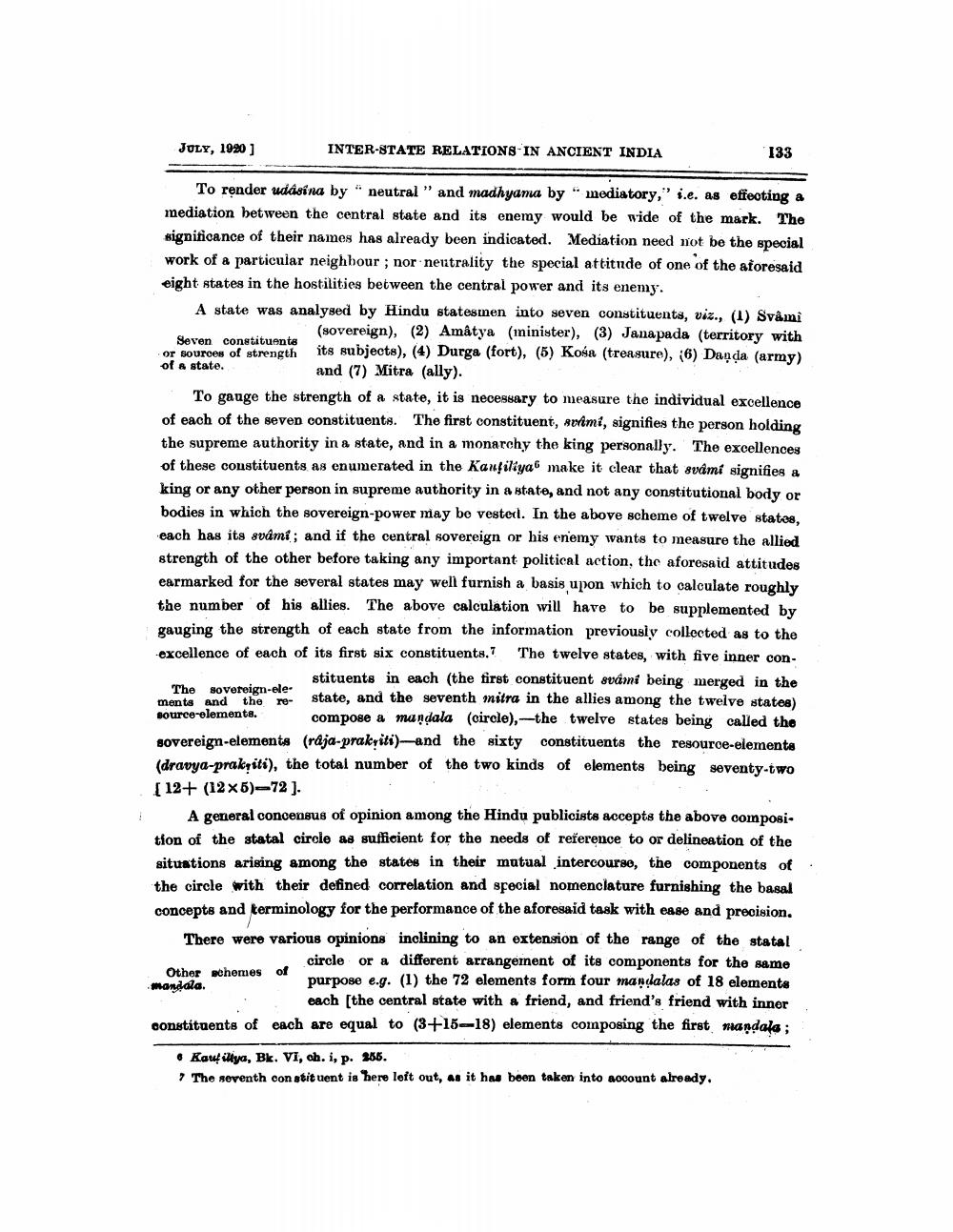________________
JULY, 1920)
INTER-STATE RELATIONS IN ANCIENT INDIA
133
To render udasina by " neutral" and madhyana by "modiatory," i.e. as effeoting a mediation between the central state and its enemy would be wide of the mark. The significance of their names has already been indicated. Mediation need not be the special work of a particular neighbour ; nor neutrality the special attitude of one of the aforesaid eight states in the hostilities between the central power and its enemy. A state was analysed by Hindu statesmen into seven constituents, viz., (1) Svami
(sovereign), (2) Amatya (minister), (3) Janapada (territory with Seven constituents or sources of strength its subjects), (4) Durga (fort), (5) Kosa (treasure), 6) Danda (army) of a state.
and (7) Mitra (ally). To gauge the strength of a state, it is necessary to measure the individual excellence of each of the seven constituents. The first constituent, svimi, signifies the person holding the supreme authority in a state, and in a monarchy the king personally. The excellences of these constituents as enumerated in the Kauçiliyab make it clear that svami signifies a king or any other person in supreme authority in a state, and not any constitutional body or bodies in which the sovereign-power may be vested. In the above scheme of twelve states, each has its svání; and if the central sovereign or his enemy wants to measure the allied strength of the other before taking any important political action, the aforesaid attitudes earmarked for the several states may well furnish a basis upon which to calculate roughly the number of his allies. The above calculation will have to be supplemented by gauging the strength of each state from the information previously collected as to the excellence of each of its first six constituents. The twelve states, with five inner con
stituents in each (the first constituent svåmí being merged in the The sovereign-ele. ments and the re- state, and the seventh mitra in the allies among the twelve states) source-elemente. compose a mandala (circle),--the twelve states being called the sovereign-elements (rdja-prakriti)- and the sixty constituents the resource-elements (dravya-prakriti), the total number of the two kinds of elements being seventy-two [12+ (12x5)-72).
A general concensus of opinion among the Hindu publicists accepts the above composition of the statal circle as sufficient for the needs of reference to or delineation of the situations arising among the states in their mutual intercourse, the components of the circle with their defined correlation and special nomenclature furnishing the basal concepts and terminology for the performance of the aforesaid task with ease and precision. There were various opinions inclining to an extension of the range of the statal
circle or a different arrangement of its components for the same Other schemes of mandala.
purpose e.g. (1) the 72 elements form four mandalas of 18 elements
each (the central state with a friend, and friend's friend with inner constituents of each are equal to (3+15-18) elements composing the first mandala ;
• Kauf illya, Bk. VI, ch. i, p. 356. 7 The noventh constituent is here left out, as it has been taken into account already,




